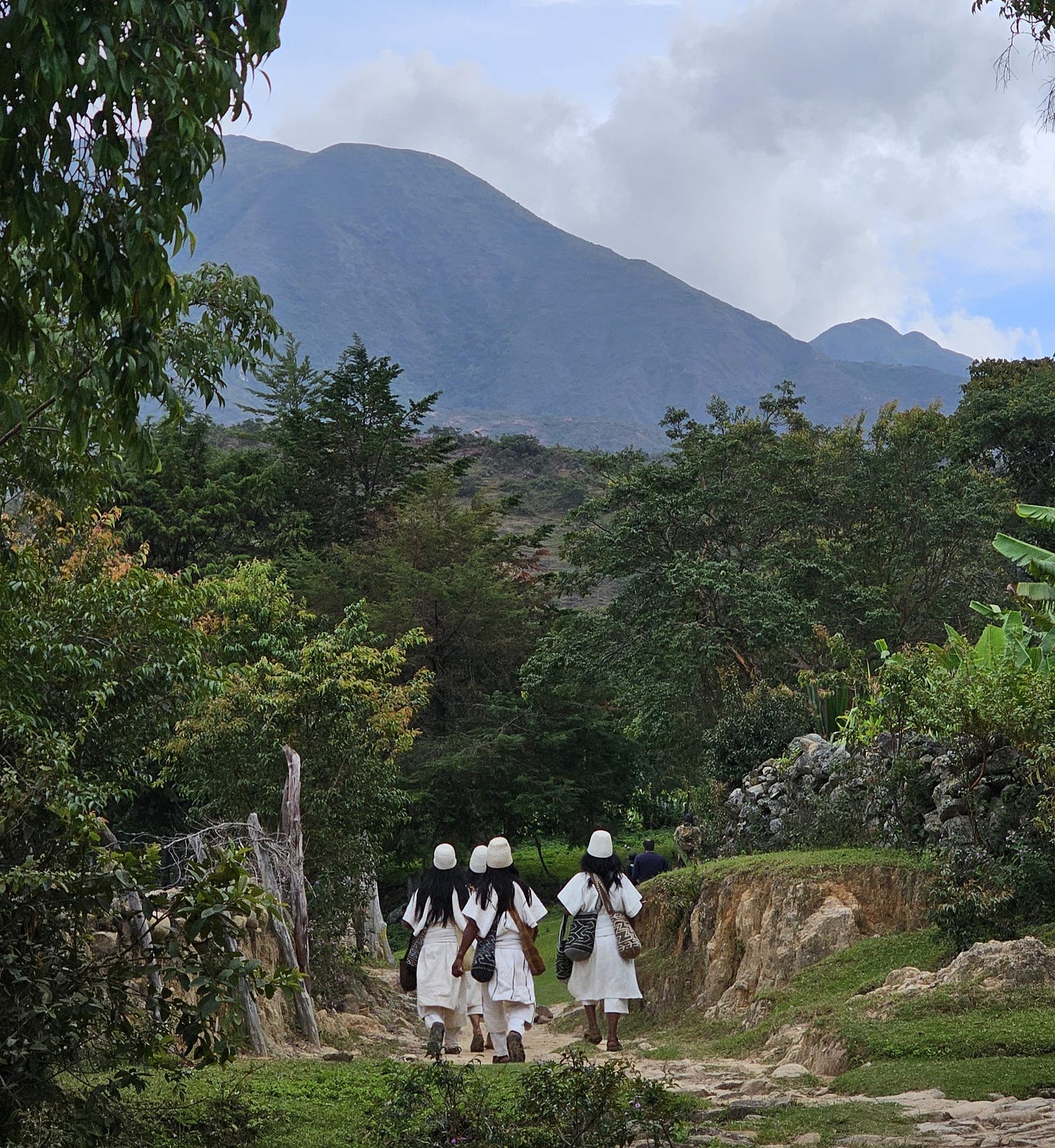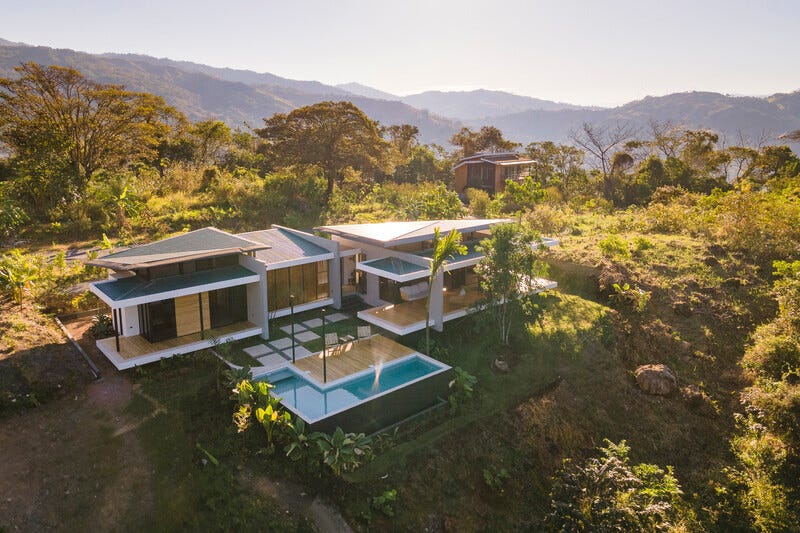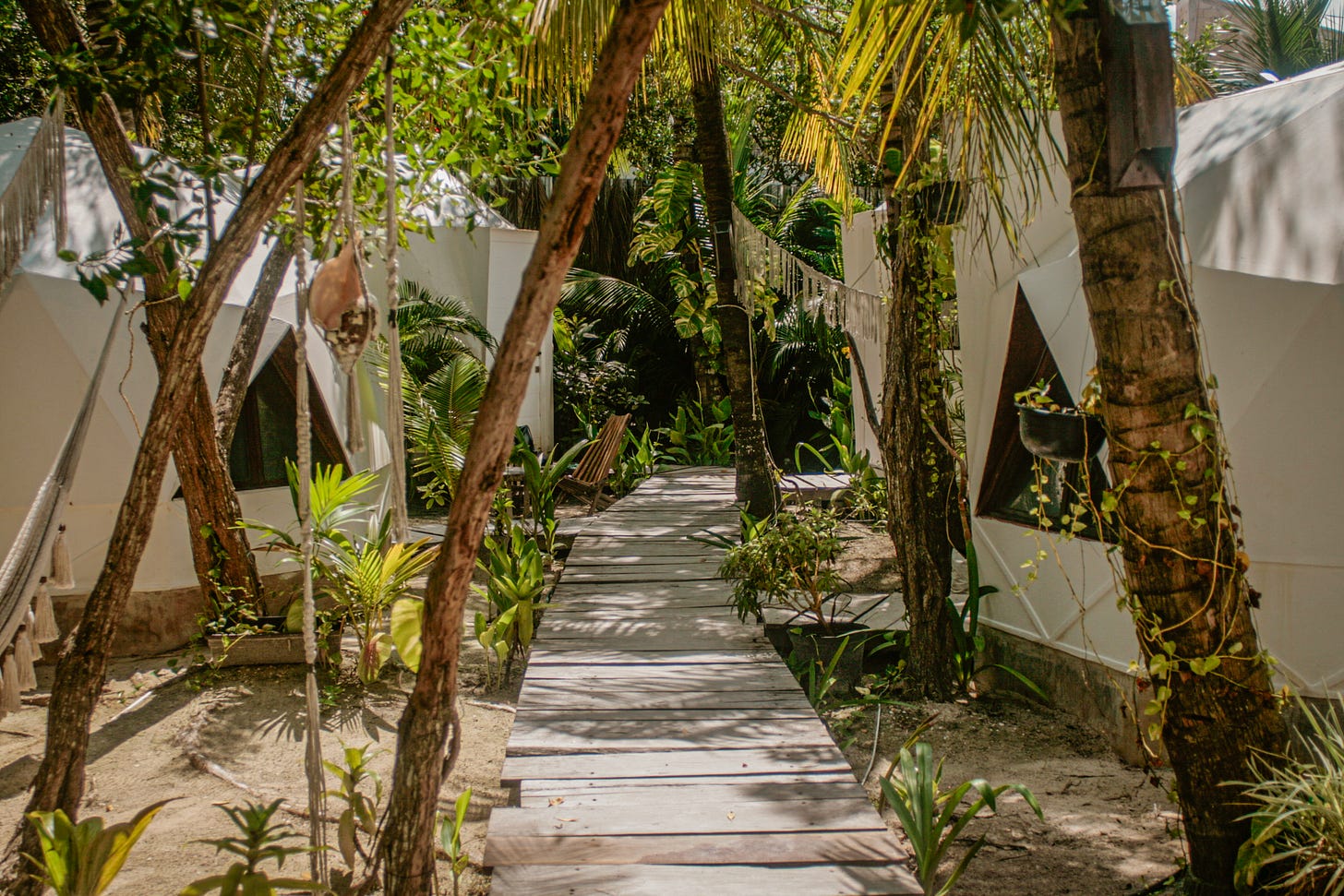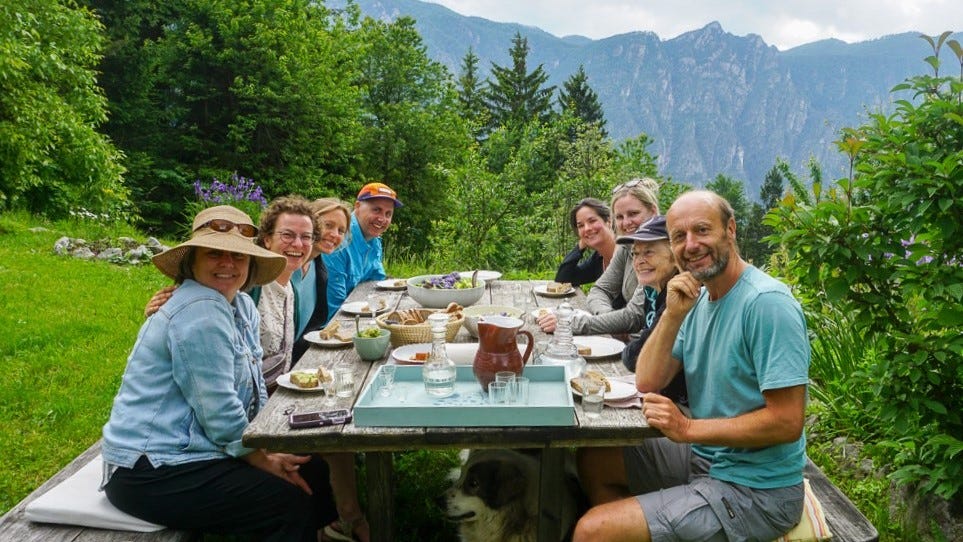Eco-Gentrification and The Village Movement
Privilege and the price of nature in an ecovillage context
Let’s talk about the elephant in my throat.
In recent years, the village movement has gained traction as a viable solution to numerous global challenges, from climate change to social disintegration.
As the appeal of sustainable, intentional communities grows, so too does a less-discussed phenomenon: eco-gentrification.
What is Eco-Gentrification?
This is something I noticed almost immediately when I began my ecovillage travels and research, and have seen many instances in different communities.
Gentrification is more well-known in urban areas.
It is the displacement of residents and business owners by wealthier groups of people. This displacement changes the character of the area in question and disrupts traditional community networks.
According to a report by Governing, about 20% of lower-income neighborhoods in the largest U.S. cities experienced gentrification from 2000 to 2015.
I use eco-gentrification to refer to the process where environmental improvements and sustainability projects in rural areas lead to the economic and/or social displacement of local residents. It also implies the continuation of racial inequalities and perpetuation of neocolonial dynamics.
I see it essentially as the suburbanization of nature.
USDA’s Economic Research Service reports that rural areas have seen a significant influx of retirees and second-home buyers, which has led to gentrification in some regions, particularly in scenic or amenity-rich areas.
As spaces become more attractive due to green amenities, property values and living costs rise, making it difficult for the original residents to remain.
As ecovillages succeed and become desirable places to live, they can inadvertently contribute to the displacement of local populations.
This is particularly concerning in areas of the world that are experiencing rapid, irresponsible development due to sharp raise in desirability and low barrier to acquisition — mainly the global south.
The Village Movement in the Global South
Economic pressures and lifestyle incentives are creating an exodus from the global north. People priced out of Hawaii or fed up with Norwegian winters are migrating to jungles in Latin America or impoverished farmlands in Portugal.
Sometimes these people aren’t even necessarily looking for an intentional community, but they may land in one because culturally it is the most comfortable.
Add in the heavily advertised dream of going barefoot in some jungle in Costa Rica drinking straight from a coconut, and the invitation is very tantalizing.
More importantly, fellow village dreamers often bump into a host of problems when trying to develop a collectively modeled eco-community in a first world country:
Strict zoning and permitting laws
Expensive prices of land
High cost of living, labor, and materials
Lack of collective consciousness towards community
Buying cheap land in rural outskirts of other countries is how several international ecovillages first established some 30 years ago, but back then they were much more conscious about their relationship with their local counterparts.
Some of the principal reasons that eco-projects are built in developing countries:
This trend of eco-development in the global south has already started presenting glaring social and economic issues.
Eco-Gentrification’s Negative Effects
I realize the criticizing a movement causes factions, which slow us down. Yet it is our responsibility to be aware of these effects when transplanting an ecovillage in a developing or disadvantaged country:
Raising cost of living for locals
This is possibly the most detrimental effect.
When an ecovillage project takes root in a previously neglected area, the subsequent influx of affluent [expat] residents and the development of green infrastructure drives up property values.
Rents, living costs, and the prices of services and goods all increase. This pushes out the very people who could benefit most from the community's resources and initiatives. It also turns sustainable community into a boutique experience.
Some people argue that creating an ecovillage in an impoverished area creates economic opportunity, but if accompanied by rapid raises in the cost of living, you are really only benefitting those who manage to get employed by your project.
Being Neocolonial
God, I’ve been in too many ecovillages that refer to their local employees as ‘the workers’ or ‘the help’ or ‘the kitchen’, purposely distinguishing them from ‘community member’.
For one, treating them as a monolith is starkly ignorant. Secondly, by distancing themselves, they don’t have to contend with the discomfort in the differences of privilege or the differences in culture.
If your ecovillage depends on cheap and even immigrant labor (even cheaper than locals) to build your houses, tend your gardens, and nanny your kids, then you’ve completely missed the self-sufficiency and communal target and have moved 20 steps back to square colonialism.
Greenwashing sustainable practices and co-opting regenerative branding
Simply because the community is set in nature and has a general sustainable bent does not make it a regenerative village, or even an ecovillage.
I’ve seen self-ordained ecovillages use cement to build, carve roads that require you to own a car, and blast A/C every day because they took their first world tastes and moved to a humid tropical country.

Conversely, if you award yourself the regenerative title for solely the project’s ecological benefits, without considering its negative social impact, then you are not looking at the full picture.
Advocates of regeneration insist that regeneration is achieved when we also dismantle the inequalities that allowed us to become degenerative in the first place.
Lack of social connectivity
A pattern of high mobility also appears in these gentrifying communities.
I’ve seen how this mobility reinforces a disconnected mindset from the places they are living. Residents will be only present in high season, and go on frequent vacations, border runs, and long sojourns to their home countries.
Results of this include absent landlords that rent out their houses in the communities, social incoherence from high turnover, and lack of duty to serve the local community beyond the borders of the ecovillage.
Eco-Gentrification in Ecovillage-Adjacent Spaces
With the growing popularity of retreat centers, permaculture farms, and eco-friendly hotels, the consciousness of eco-gentrification becomes crucial.
Annoyingly, when trying to search for communities to travel to, I’ve found many hotels with eco-friendly practices calling themselves an “ecovillage”.
This can be considered eco-gentrification when these projects are founded by foreign investors who do not contribute to local economy, or when these projects only follow an eco-chic appearance, but lack holistically sustainable and inclusive practices.
Because ecovillages often double as retreat centers or eco-hotels in order to generate income, awareness of this trend is important in order to avoid unconscious action that negatively impacts the original population of the area where an intentional community is built.
Balancing Regeneration and Inclusivity
Ecovillages can, and absolutely do, positively impact their local communities.
Despite the risk of causing these negative outcomes, we can always stand to implement these 3 strategies:
Inclusivity
Affordability
Community Involvement
Inclusivity Strategies
Whether your surrounding community is midwestern farmers or indigenous people from another culture, you must implement strategies for inclusivity. This is very much about making the community socially accessible first through a positive and welcoming environment.
Language
If your area is multi-lingual, making resources and ads for your services, events, and announcements in the local language is essential.
I once lived in a bilingual ecovillage in Mexico. Our community meetings would take twice as long because of the translation, yet we always made the effort and learned that a designated translator at every meeting was a must.
Culture
Ecovillages should also research how to create a community culture that is actively inclusive, rather than passively inclusive, which just assumes that being friendly and open-minded is enough.
Ways to diversify culture:
discounts or scholarships for locals to attend programs/workshops
awareness trainings of topics of neurodivergence, gender identity, and racial sensitivity
actively seeking indigenous counsel and leadership

Affordability Strategies
It doesn’t matter how friendly your community is if most local people can’t engage with it due to affordability. Here are some financial strategies:
Community Land Trusts (CLTs): Establishing CLTs can help secure land for community use and prevent market forces from driving up property values. By keeping land ownership within a trust, we can ensure long-term affordability and access for all community members.
Mixed-Income Models: Designing villages with a mix of housing options at different price points can help maintain economic diversity. Subsidized housing and affordable rent schemes can ensure that lower-income residents are not excluded.
Local Economic Development: Supporting local businesses and creating job opportunities within the community can help retain residents and build a resilient local economy. Initiatives such as cooperative businesses and social enterprises can play a significant role in this regard.



Community Involvement Strategies
To ensure that the village movement does not fall prey to the pitfalls of eco-gentrification, adopt strategies that promote inclusivity and affordability. Here are a few key approaches:
Participatory Planning: Involving local residents in the planning and development process can help address their needs and concerns, fostering a sense of ownership and inclusion. This collaborative approach can mitigate the risk of displacement and ensure that the benefits of regeneration are shared by all.
Social Equity Policies: Implementing policies that prioritize social equity can help create more balanced communities. These might include rent control measures, inclusionary zoning laws, and community benefit agreements.

To Expatriate or Not?
Everyone is complaining that California is more expensive than ever. I should be very tempted to go live somewhere like Mexico or Colombia where cost of living is lower and my dollar-based income goes further.
Yet, I’ve chosen to live at Wild Seeds in California because I feel that this is where I can have the most impact and feel the most culturally relevant and integrated.
After traveling to and living in communities throughout Mexico, Costa Rica, and other communities in LATAM, I’m not at all interested in supporting the trend I’ve described here. I have accepted that my presence in these countries is a gentrifying force and I’m not okay with just brushing that off.
I am not saying that we don’t have a right to relocate internationally and that we aren’t all citizens of Mother Earth. This is my personal choice, and I hold no judgement on anyone who chooses differently.
The Promise of the Village Movement
The village movement, particularly the rise of modern ecovillages and regenerative communities, offers a beacon of hope for those seeking alternatives to the disconnected, consumption-driven lifestyle prevalent in many parts of the world.
What I observe on occasion is that people seeking community are seeking some imagined paradise.
This is often the drive to leave behind the systems and governments that we see as broken for a different land where we don’t have the politics or consumerist culture in our faces all the time.
What we often fail to realize is that we might be moving to another country with equal or greater amounts of corruption and social failure, but as expats we’ve absolved ourselves of civic responsibility to change that. We end up acting like long-term tourists in a country we supposedly call home.
We are called to respect a sense of place, and so we must ask ourselves, “Do we know our place?”.
Learning from the Past and Moving Forward
As we continue to champion the village movement as a solution to our ecological and social crises, it is imperative to remain vigilant against the risks of eco-gentrification. This article may focus on the exaggeration of the negative, but in my future books, I hope to address more elaborate strategies for positive cultural design.
Eco-gentrification presents a complex challenge for the village movement, but it is one that can be addressed with thoughtful planning and a commitment to social equity.
The village movement can draw valuable lessons from historical and contemporary examples of gentrification. We must apply these insights to future developments.
Whether you are building, joining, or simply visiting an ecovillage, look into these kinds of conscious practices.
One of my affiliated partners, Community Finders, run by Cynthia Tina, offers services for people seeking ecovillages or building ecovillages. I highly recommend you join one of her courses to uplevel your ecovillage journey.
Use the code TERRENITY for $100 off your ecovillage tour.











A great slap-in-the-face article. Thanks for your work Nicole and for the courage to tell it the way it is. My best, Vic D.
This is an insightful look into a small version of colonialism attempted by the rich/upper-middle class in the hopes of building their dream homes in these poor or low income areas from their economically unstable countries.